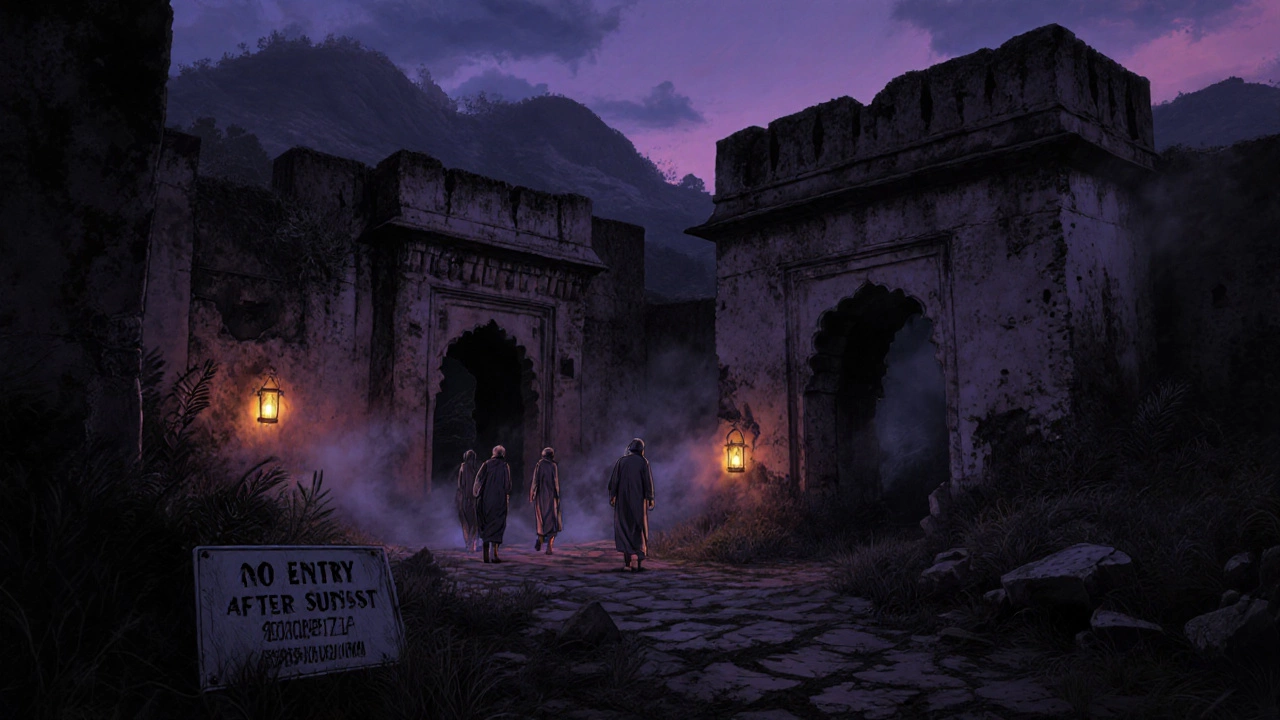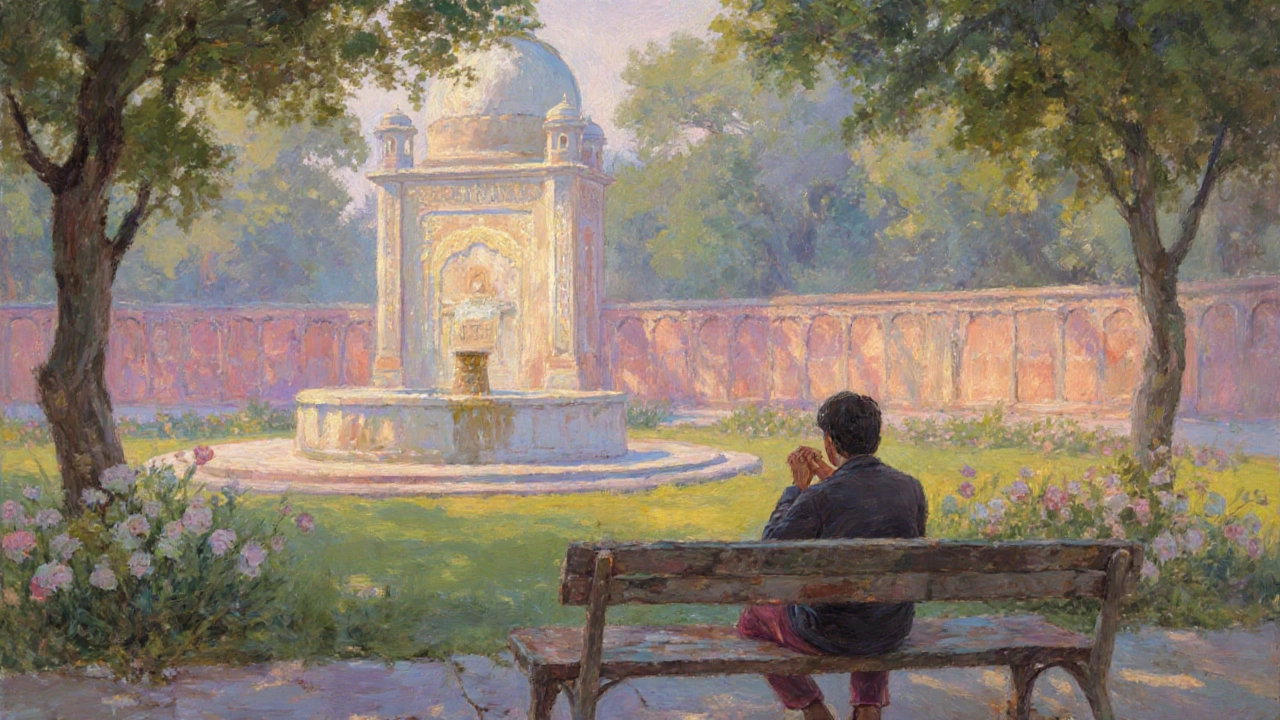Why Tourists Are Drawn to Dark Tourism - Insights for Cultural Travelers

- Oct, 20 2025
- 0 Comments
- Aaron Blackwood
- Visiting dark sites satisfies a deep curiosity about mortality and history.
- Travelers often seek emotional intensity that ordinary attractions don’t provide.
- Dark tourism can foster empathy and a personal connection to past suffering.
- India offers a growing list of dark destinations that blend history with cultural tourism.
- Respectful planning and ethical behavior keep the experience meaningful for both visitors and locals.
When people hear the term dark tourism is the act of visiting places historically associated with death, tragedy, or disaster, they often picture abandoned prisons or battlefields. Yet the appeal runs deeper than a thrill‑seekers’ buzz. Understanding why dark tourism captivates travelers helps you decide whether it belongs on your itinerary and how to experience it responsibly.
Defining Dark Tourism
Dark tourism is a sub‑genre of travel that focuses on sites linked to suffering, conflict, or catastrophe. These locations can be anything from former concentration camps and war memorials to natural disaster zones and haunted ruins. The term was coined by scholars Lennon and Foley in 2000 to capture a growing trend: tourists deliberately seeking out places that remind us of humanity’s darker moments.
Psychology Behind the Pull
Why do people willingly confront morbid history? Several psychological factors intersect:
- Curiosity about mortality - Facing death‑related sites helps us grapple with our own finitude, a concept psychologists call “mortality salience.”
- Adrenaline and excitement - The unknown and the eerie trigger the brain’s reward pathways, giving a safe rush of fear.
- Desire for authenticity - Dark sites often feel raw and unfiltered, offering a contrast to glossy, commercial attractions.
- Empathy and learning - Seeing the remnants of tragedy can deepen understanding of other cultures and histories.
- Storytelling - Visitors love to share compelling, sometimes spooky, narratives with friends.
These motivations are not mutually exclusive; most travelers blend several reasons on a single trip.
Types of Dark Tourism Experiences
Dark tourism isn’t a monolith. Below are the main categories you’ll encounter:
- War and conflict sites - Battlefields, forts, and former prisons.
- Disaster zones - Areas hit by earthquakes, tsunamis, or industrial accidents.
- Tragic accident locations - Shipwrecks, crashed aircraft, or infamous road accidents.
- Memorials and museums - Institutions that preserve the memory of genocide or famine.
- Haunted or abandoned places - Sites with folklore or reputed paranormal activity.
Dark Tourism in India: Notable Sites
India’s rich tapestry of history includes a growing list of dark destinations that fit neatly within cultural tourism. Here are five that attract both domestic and foreign visitors:
- Bhangarh Fort - Often called India’s most haunted ruin, the 17th‑century fort in Rajasthan is shrouded in legends of a cursed royal family. The Archaeological Survey of India restricts entry after sunset, adding to its mystique.
- Cellular Jail - Located on the Andaman Islands, this colonial prison housed Indian freedom fighters. The sound and light show recounts the hardships endured, turning a place of oppression into a poignant memorial.
- Kuldhara - An abandoned village in Gujarat, deserted overnight in the 19th century under mysterious circumstances. Locals claim a curse, and visitors report an eerie silence that feels out of time.
- Jallianwala Bagh - The site of the 1919 massacre in Amritsar, now a public garden that preserves the blood‑stained memory of the tragic event.
- Gibraltar Hill War Cemetery - Though small, this WWII cemetery in Chennai serves as a reminder of global conflict reaching Indian shores.
These sites are often included in broader heritage tours and can be combined with cultural experiences such as local cuisine, festivals, and crafts, creating a balanced itinerary.

Connecting Dark Tourism with Cultural Tourism India
Dark tourism is not a departure from cultural tourism; it’s an extension. While traditional cultural tours showcase art, architecture, and festivals, dark sites add depth by exposing the shadows behind the glitter. For travelers interested in the full story of a place, visiting a battlefield after a temple visit provides context about why a region developed the way it did.
When integrated thoughtfully, dark attractions enhance the narrative of a journey, turning a simple sightseeing trip into a reflective pilgrimage.
Ethical Guidelines for Visiting Dark Sites
Respect is the cornerstone of any dark tourism experience. Follow these best practices:
- Research the site's history thoroughly before you go.
- Observe local customs - many sites have specific dress codes or silence rules.
- Avoid taking selfies that appear disrespectful; consider a moment of silence instead.
- Support preservation efforts - buy tickets, donate to local heritage trusts, or hire certified guides.
- Be mindful of survivors and families who may still be affected.
These steps ensure your curiosity doesn’t become exploitation.
Checklist for Planning a Dark Tourism Trip
- Identify motivations - Are you after education, emotional impact, or thrill?
- Choose destinations - Mix well‑known sites (e.g., Cellular Jail) with off‑beat locations (e.g., Kuldhara).
- Verify access rules - Some places close at dusk or require permits.
- Hire knowledgeable guides - They provide context and keep you safe.
- Pack appropriately - Sturdy shoes, weather‑appropriate clothing, and a respectful attitude.
- Plan for reflection - Allocate quiet time after visits to process emotions.

Motivation vs. Experience: A Quick Comparison
| Motivation | Typical Site Type | Emotional Outcome |
|---|---|---|
| Historical curiosity | War memorials (e.g., Jallianwala Bagh) | Informed empathy, deeper cultural insight |
| Adrenaline & thrill | Haunted ruins (e.g., Bhangarh Fort) | Excitement, temporary fear, memorable story |
| Personal reflection | Disaster zones (e.g., Chernobyl) | Contemplation on mortality, humility |
| Social sharing | Iconic tragic sites (e.g., Cellular Jail) | Sense of connection, compelling narrative to tell |
Beyond India: Global Benchmarks
Seeing how other countries handle dark tourism can inspire better practices at home. Two famous examples:
- Chernobyl - The exclusion zone in Ukraine now hosts guided tours, emphasizing scientific education and strict safety protocols.
- Machu Picchu - While primarily an archaeological marvel, its “lost city” mythos draws travelers hungry for mystery, prompting UNESCO to balance preservation with visitor demand.
Both sites illustrate that dark tourism can coexist with conservation when managed responsibly.
Frequently Asked Questions
Is it okay to take photos at dark tourism sites?
Photography is generally allowed, but always check local rules. Avoid selfies that seem disrespectful, especially at memorials or places of recent tragedy.
Do I need a guide for places like Bhangarh Fort?
A guide isn’t mandatory, but it adds historical context and ensures you respect the “no‑entry after sunset” rule, which is strictly enforced.
What safety concerns should I be aware of?
Many sites are in remote or rugged terrain. Wear sturdy footwear, carry water, and heed any warning signs about unstable structures.
Can dark tourism be combined with other types of travel?
Absolutely. Pair a visit to Cellular Jail with a beach day in Port Blair or a culinary tour of Andaman cuisine for a well‑rounded experience.
How can I support local communities when visiting these sites?
Purchase tickets from official sources, hire local guides, and buy souvenirs made by artisans from the area. Your spending helps fund preservation.
Dark tourism isn’t about seeking misery for its own sake; it’s a doorway to deeper understanding, emotional richness, and responsible storytelling. Armed with the right motivations, ethical guidelines, and a few well‑chosen Indian sites, you can turn a curiosity into a meaningful journey.